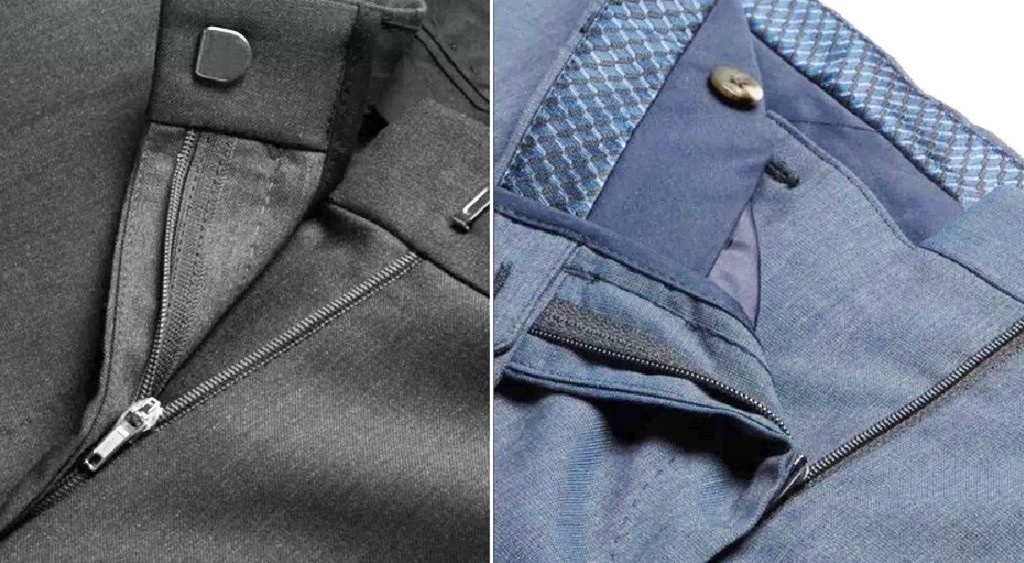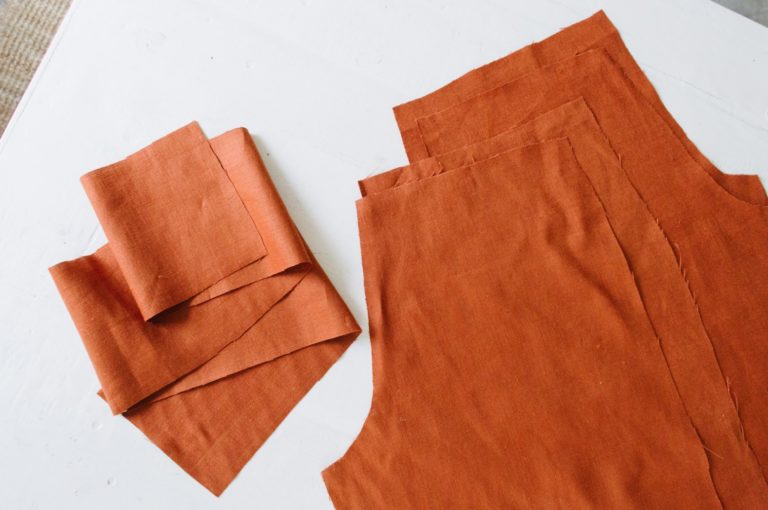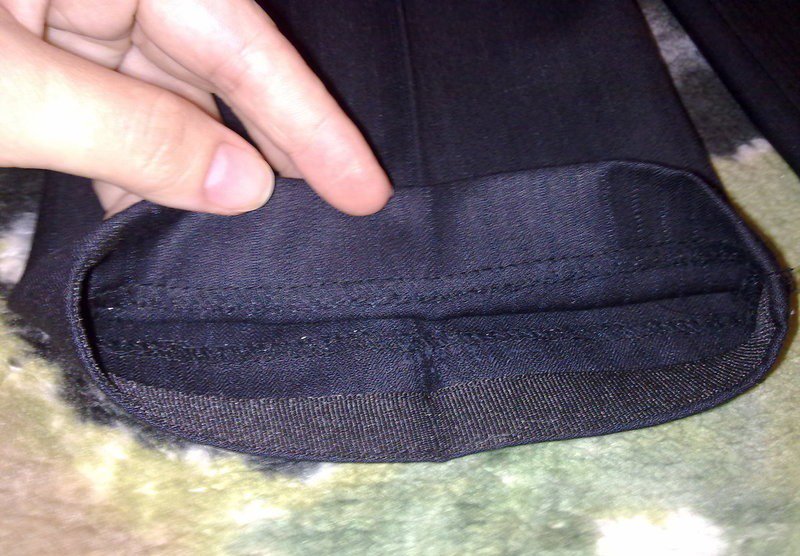Trousers are a basic item of a woman's wardrobe. They are loved for their convenience and practicality. Any woman wants her trousers to fit her figure well and highlight her advantages, but this is not always the case. It is useful for every girl to know about the types of trousers' fit defects and how to eliminate them. This will help to adapt any item you like to your individual parameters.
How to Fix Basic Sewing Defects
Many women prefer to sew trousers themselves, this approach allows to achieve a perfect fit. Often, when sewing, defects of trousers are found due to incorrect cut or incorrectly taken measurements. Knowing how to correct them, you can achieve the desired result without losses.
In the area of the belt
What to do if your trousers don't fit well in the waist area:
- When a horizontal fold appears at the back under the waistband, this indicates that the back seam is too long. To correct the fit defect, it is necessary to shorten the back halves by the size of this fold, and also lengthen the dart at the waist by the size of the cut piece.
- The tension of the fabric under the waistband indicates that the pants are too tight in the hips or the center seam on the front half is excessively concave. In the first case, the problem can be solved by increasing the fabric along the mid-thigh line, after which a more convex line is drawn from the waist to the knee through the new point. In the second case, the seam line should be made less deep.
- If folds form in the abdominal area, this indicates a lack of fabric. To correct the imperfection, you need to add the missing material. To do this, you should horizontally cut the pattern of the front half of the pants in the abdominal area and spread it by the amount of the missing volume.
- The tension in the upper back area is due to the halves being too narrow. It is necessary to enlarge the parts only in the place of the defect along the middle seam.
- When trying on a garment that is too big around the waist, you should remove the excess fabric into the side or center seams.
- Sometimes the tension at the back is too weak, which affects the fit of the trousers. This can occur due to the excessive length of the belt. To get rid of the cutting defect, it is enough to remove the excess fabric in the side seam.
The same fit defects are observed when sewing men's trousers.


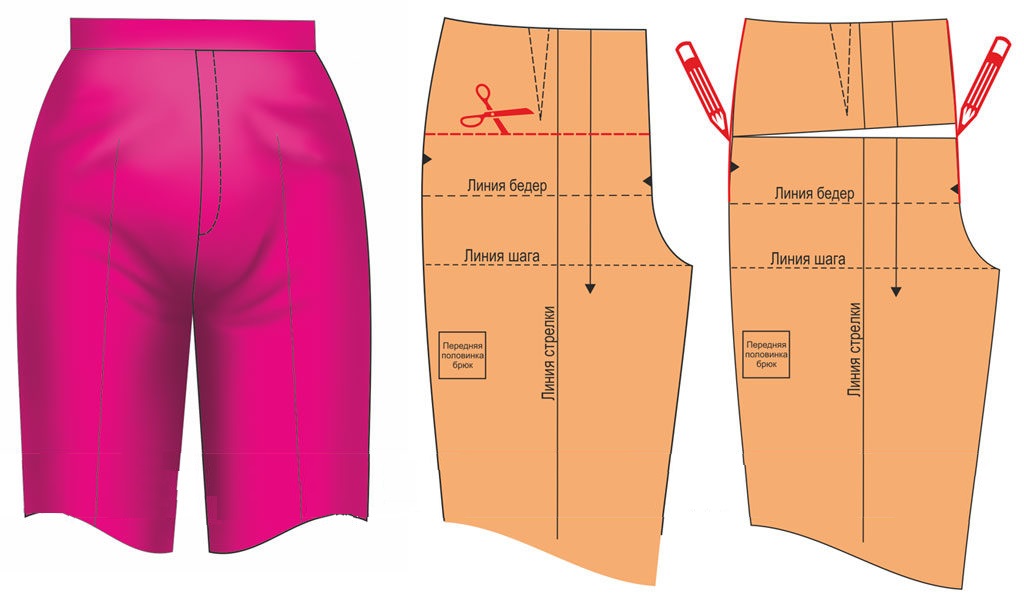
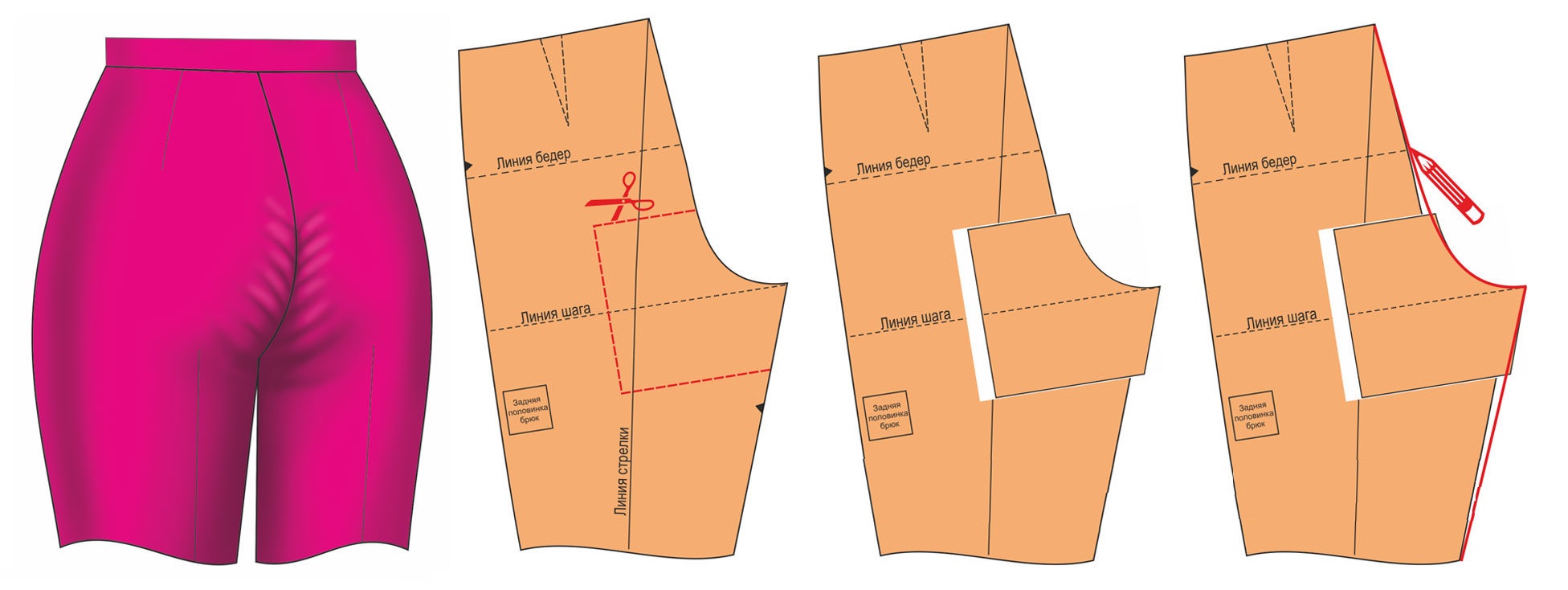

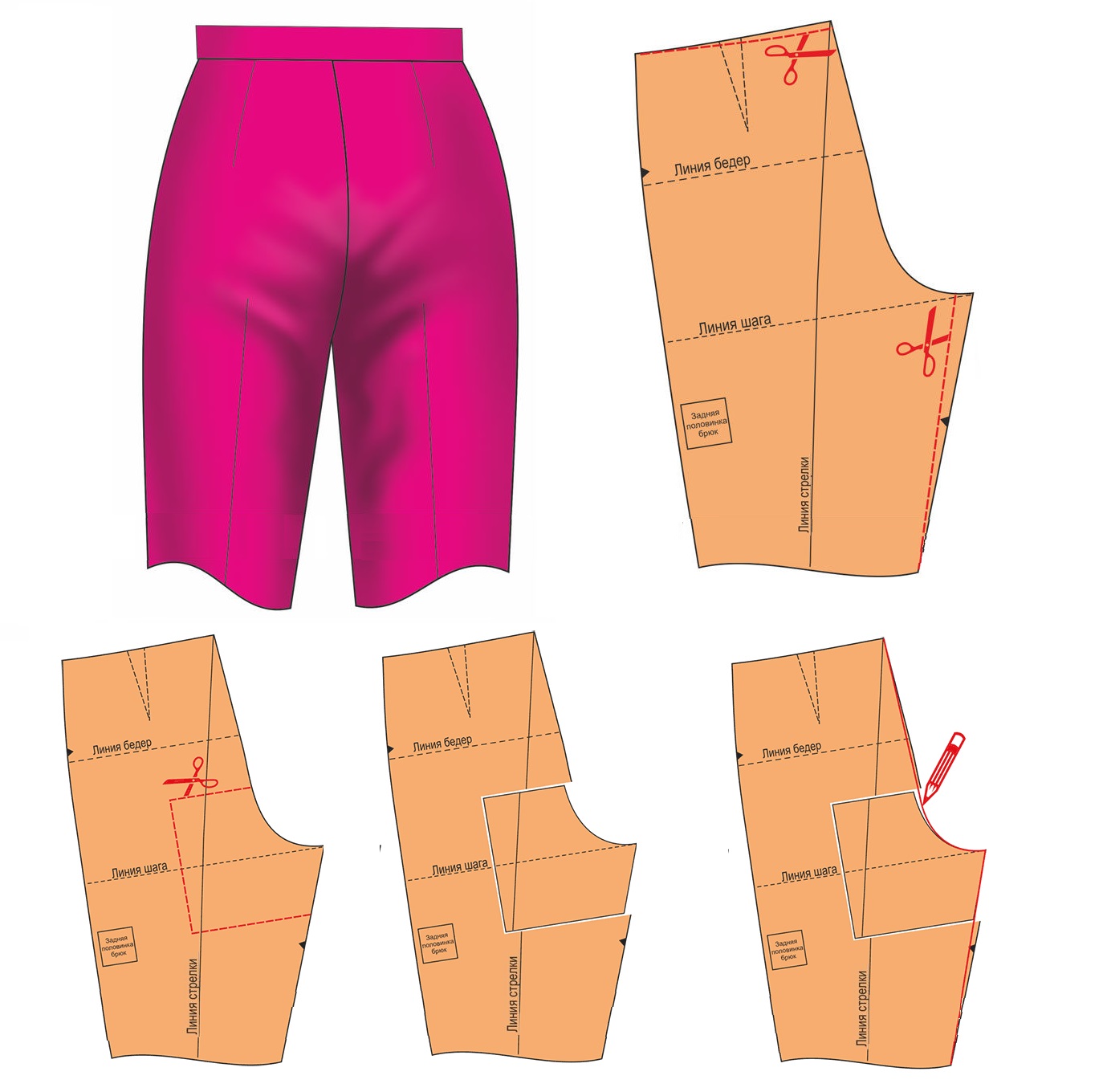
In the area of the buttocks and thighs
What to do if defects in the hips and buttocks area are visible when trying on trousers:
- Sometimes you can notice horizontal creases at the bottom of the buttocks and in the front of the trousers. They can occur if the hips are full in the front. To solve the problem, you need to add the missing volume to each seam of the front halves of the product, subtracting the same number of centimeters from the back.
- If it turns out that the product is too big in the hip area, then fan-shaped oblique creases will definitely form in the trousers under the buttocks. There is a simple way to correct the defect. You should lower the waistline to the required level, in addition, shorten the step length on the back half of the product.
- Horizontal folds on the sides of the hips mean that the fabrics exceed the required length; it will be necessary to shorten the upper edges of the blanks, making allowances along the middle seam.
- If the trousers are too wide, vertical folds may form on the legs; to eliminate them, it is enough to gather the excess material into the side seam. If the resulting width is much larger than the appropriate size, the excess material should be distributed equally between the middle and side seams.
- If you have large buttocks, the seam cuts deep into the body, outlining them unattractively. In this case, you will need to make the following correction: lengthen the step line by the required number of centimeters, smoothly connect the protruding angle with the outlines of the waist and trousers.
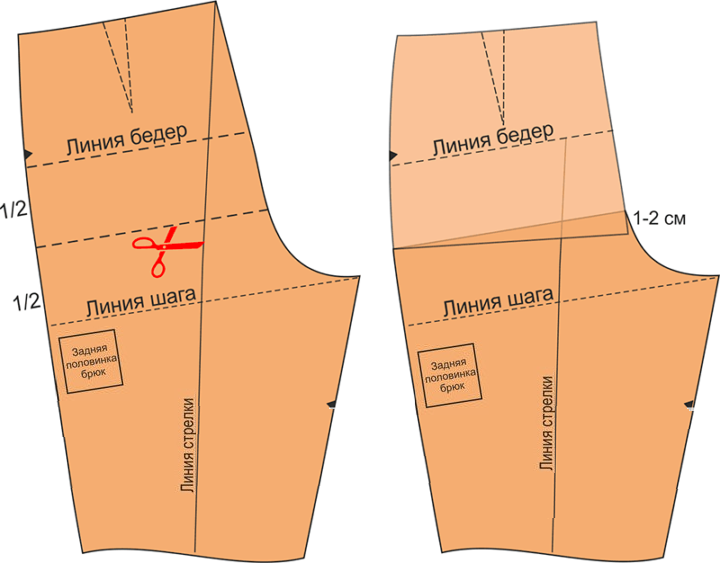

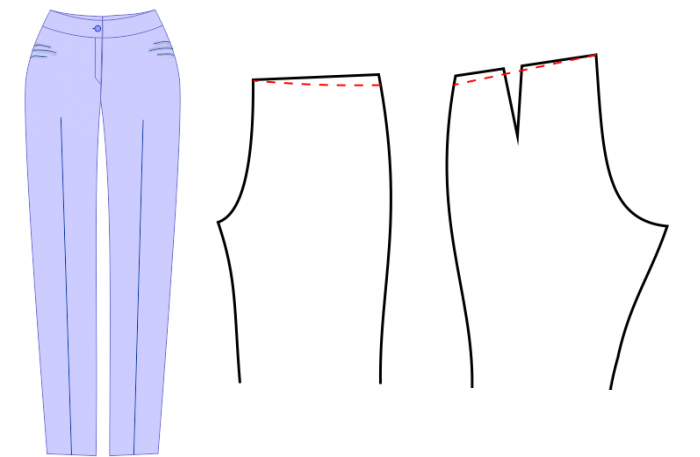
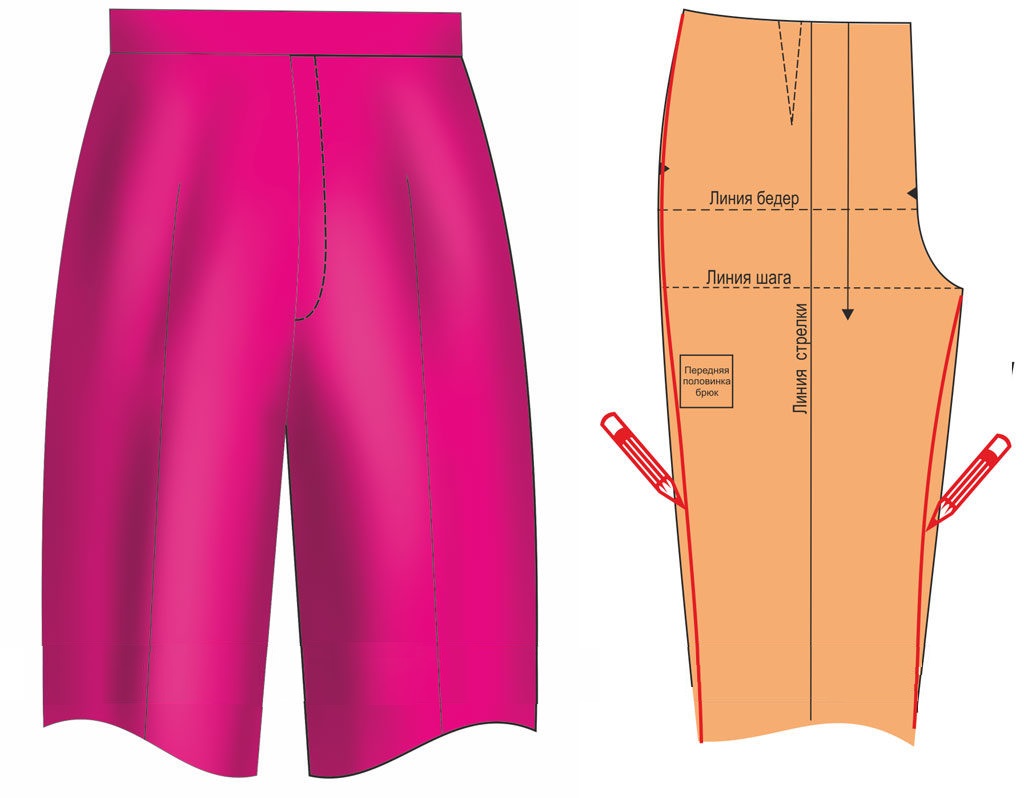
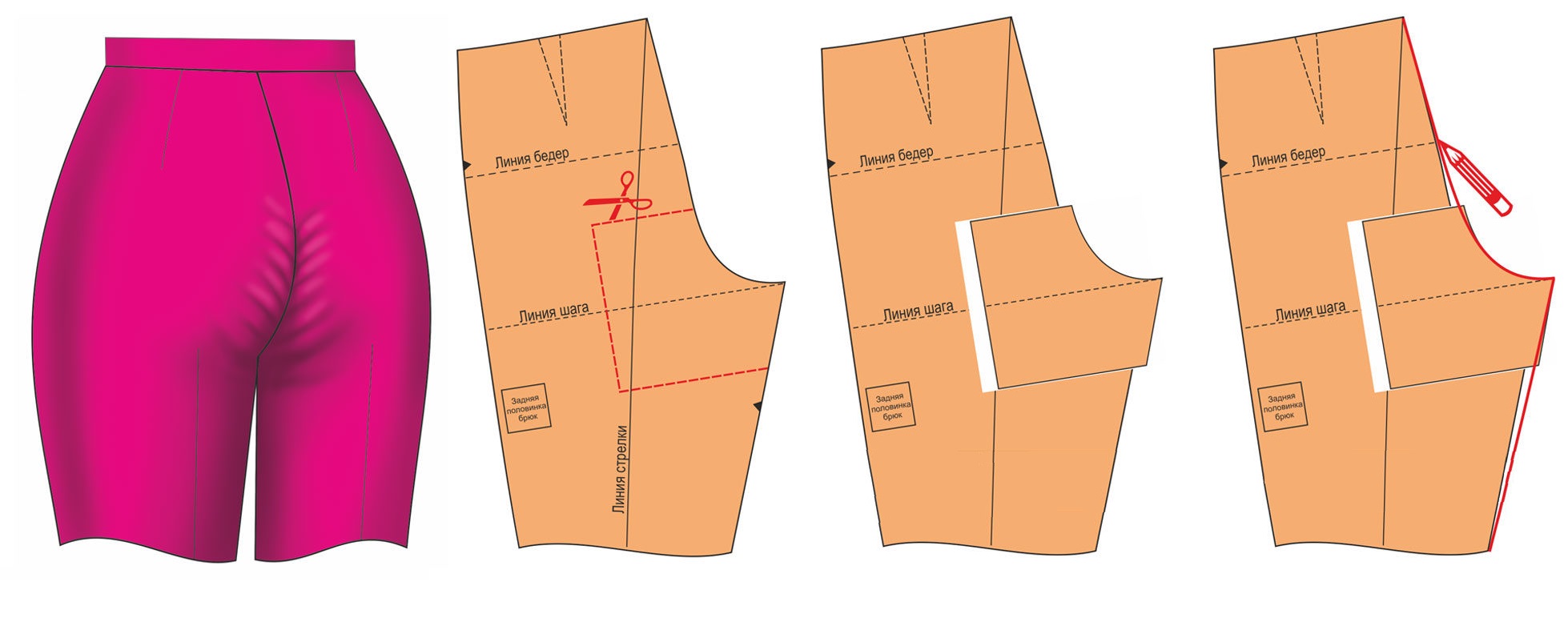
Seams and folds
Creases in the seam and fold area are a fairly common problem encountered when sewing pants yourself. Types of trouser defects and how to fix them:
- Pleats in the front under the middle seam may form if the trousers are narrow in the area of the step line or slightly below. To eliminate the cause of the imperfection, the width of the front and back halves of the product should be increased by shifting the side seams at the level of the greatest convexity of the buttocks by the required distance.
- It happens that trousers gather in an accordion in the calf or knee area. This means that the product is too narrow in this area. To eliminate the problem, it is enough to slightly increase the width of both halves of the pattern along the side and crotch seams.
- Tightness or oblique creases from the inner thighs. The cause may be fullness of the legs in this area. Depending on the degree of fullness, the inseam is increased to a straight or convex line.
- Diagonal creases on the back half of trousers may occur when parts of the garment are shifted towards the side seam. Such defects in the fit of trousers can be eliminated by turning the upper part of the back half of the garment towards the middle seam. To do this, you need to increase the part by the missing distance at the base of the middle seam and cut it by the same width at the base of the side seam. Then deepen the middle seam on the step line and shorten it by the same length at the base.
- Creases and folds in the back of the trousers in the area of the middle seam may occur if the middle cut of the back half is short. To eliminate the defect, it is enough to lengthen the middle cuts of the back halves or pull them well using heat treatment.
- Reasons whythe folds of the front parts protrude outward, There may be several: a short side seam, incorrect connection of the halves, the product is too narrow in the buttocks area. Depending on the identified cause of the defect, it is necessary extend bside seams, shift the front half of the trousers by the required amount relative to the back along the crotch seams or make the back halves wider in the buttocks area.
- Sometimes when sewing women's trousers it is discovered that the front halves of the garment are shifted inward along the folds. This can happen due to incorrect joining along the crotch seam, which is why the front half has shifted upward. The defect can be corrected by leaving a reserve of material for the back half of the garment.
- If the middle seam of the pants sags, this may mean that the seat depth was not set correctly. To correct the defect, first remove excess fabric along the waist line, then increase the length of the legs.
There are many defects in the fit of trousers, but there are also many ways to eliminate them. Only the experience and skill of a seamstress can solve any problems.


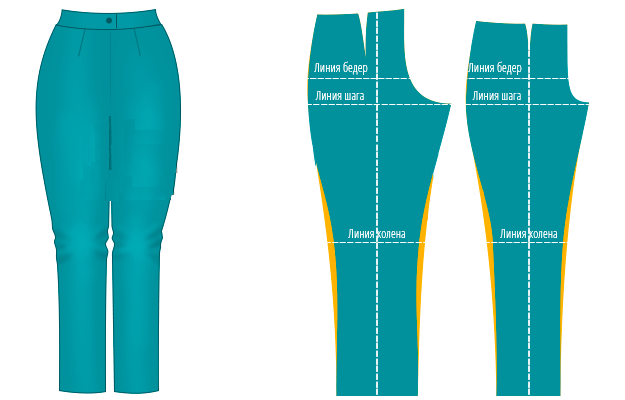


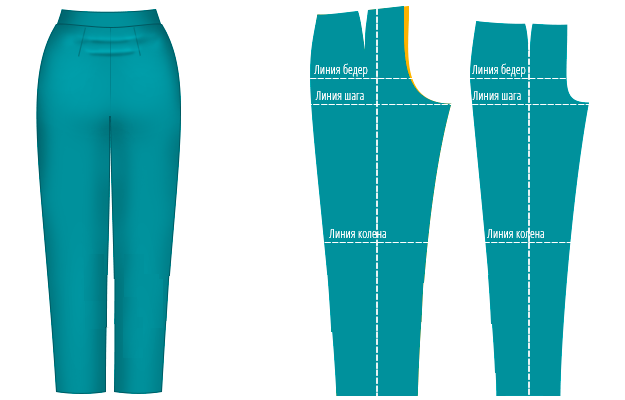
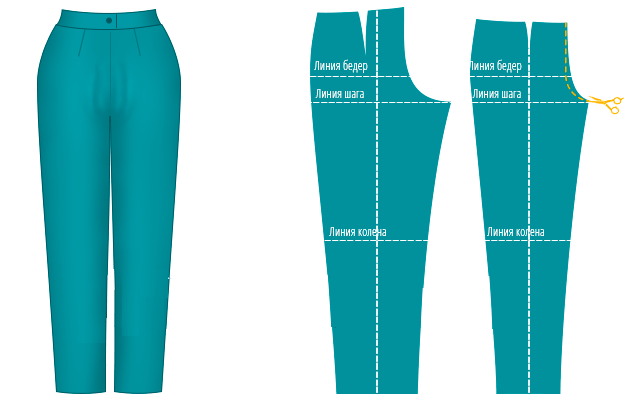
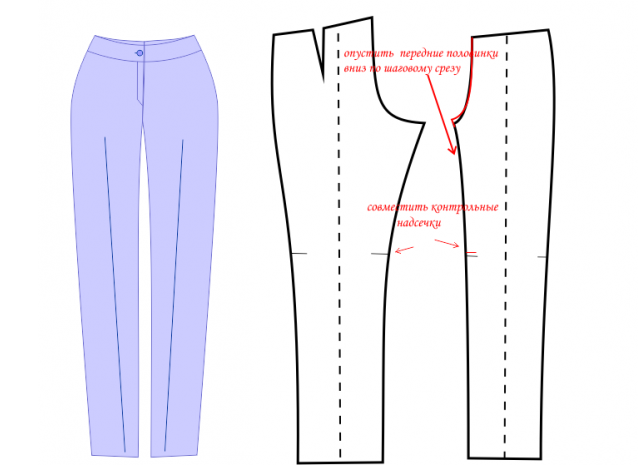
Useful tips for creating a pattern
Since women have different body shapes, pattern adjustments are often required to ensure the pants fit correctly. This is not difficult to do if you know certain rules.
How to modify a ready-made trouser pattern taking into account the features of your figure:
- Full hips: if you need to add less than 5 cm to the existing size, you need to divide the adjustment value by four, then add the resulting value on both sides of the side seam and smoothly connect the resulting points with the waist line and the bottom of the pattern. When you need to increase the pattern by more than 5 cm, you need to cut it along the grain line and move it apart by ¼ of the difference in measurements.
- If you need to modify the patterns for the size of the protruding belly, you should increase the front part. To do this, you first need to cut the pattern along the middle share line, then across the bottom of the darts to the side seam line, then move the patterns apart by the required number of centimeters. Now all that remains is to redraw the dart and cut out the pattern.
- If a woman has a large difference between her waist and hips, the patterns should also be changed. First, you need to measure the waist to calculate the difference. If it is 2-4 cm less than the pattern, then you need to measure ¼ of the established difference in girths along the top edge of the panels on both sides along the side edges. Draw lines from the resulting points, which smoothly reduce to nothing to the level of the hips. If the waist is 5-7 cm less, then you need to subtract 3-4 cm in the specified way. The remaining extra centimeters should be removed in darts.
- For X-shaped legs, use the following method: at the knee level, in the direction from the inner side to the outer side, cut the pattern not all the way (literally 1-2 mm) and move the parts apart by the size of the curvature - approximately 0.5-0.7 cm. Connect with a smooth line.
- In the case of flat buttocks, you only need to reduce the length of the step of the back halves and shorten them along the top edge.
For women whose waist is significantly thinner than their hips, low-waist trousers are best suited.
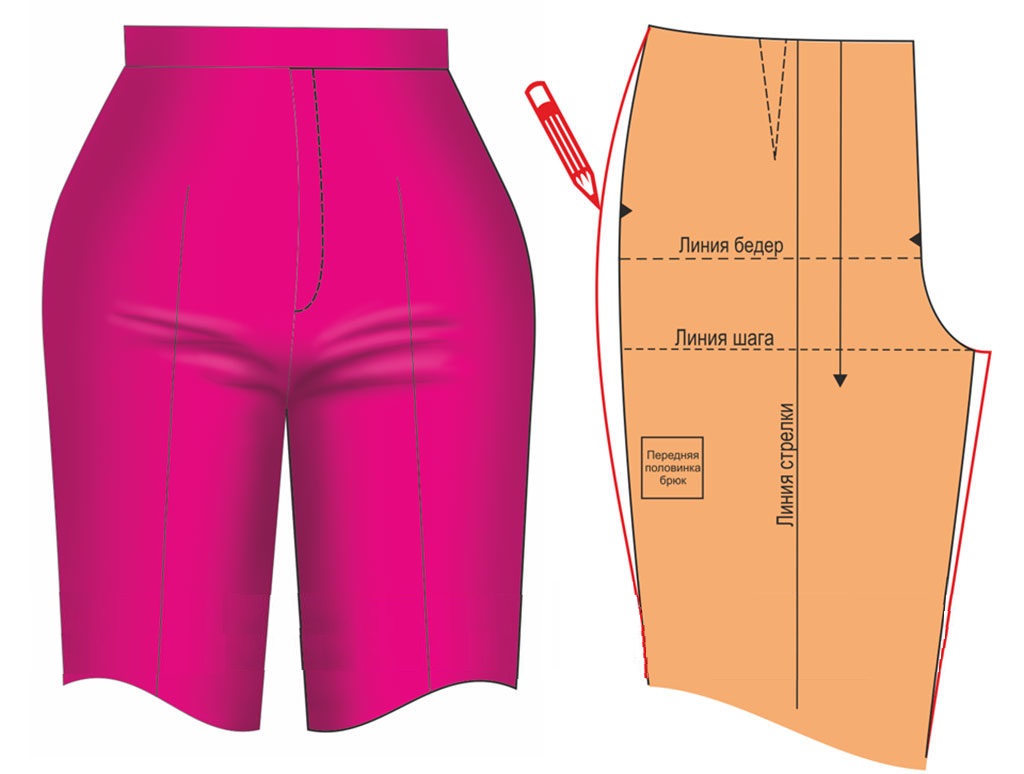
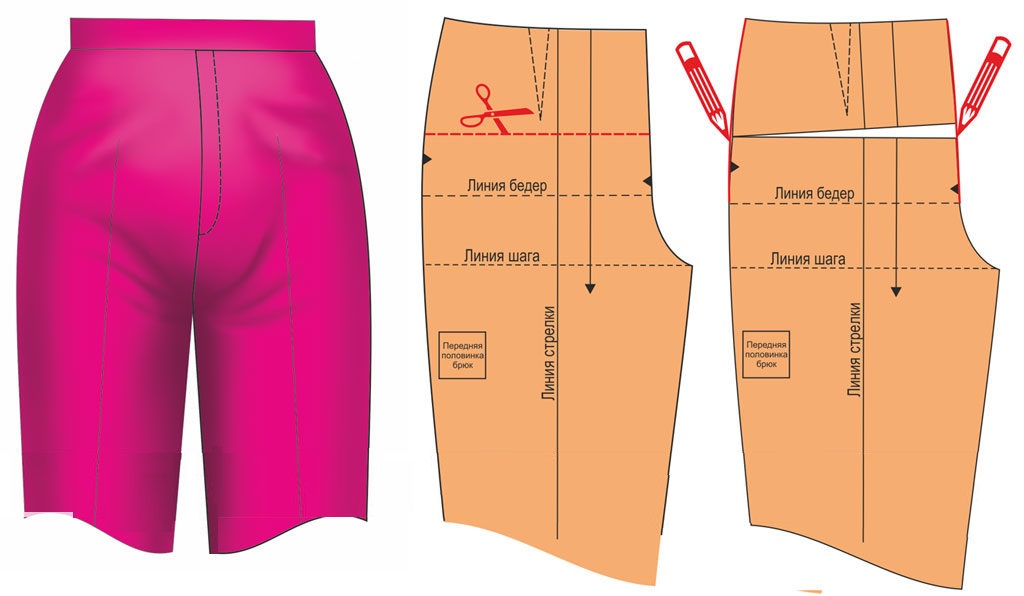



How to fix defects in finished products
Rarely can a woman boast of an ideal weight that she maintains for a long time. Usually, it changes for various reasons. You can adjust your clothes to your changed figure and continue wearing your favorite thing.
To reduce the size of the belt, you can use several options:
- Remove excess fabric into the side seams.
- Hide it in the center seam or darts.
- Add new darts or folds.
If you only need to reduce the size a little, it might be enough to re-sew a button or zipper.
To reduce the width of your pants, follow these five steps:
- Try them on and mark the areas that need hemming with white chalk or soap.
- Rip it open native wYou.
- Mark along the marked lines.
- Put it on again to make sure everything is done correctly.
- Only after this can you sew the seams on a machine and process them with an overlock.
To widen the trousers at the waist, you can make triangular inserts. For this you will need a similar fabric, but if you wish, you can play on the contrast:
- Take the necessary measurements to calculate the size of the inserts. This will be the difference between the waist width and the belt length, divided in half.
- Cut two triangles from the fabric, the upper edge of which will be equal to the calculated length, taking into account seam allowances.
- Rip offand lengthen it by sewing a rectangular insert into it.
- Rip open the side seams and sew in triangular inserts.
- When everything is ready, all that remains is to carefully sew the parts together.
To make the side inserts invisible, you need to choose the most similar fabric and threads, and lay the lines as neatly and evenly as possible. If you are worried that it will turn out badly, it is better to give the item to a professional dressmaker.
Modern stores offer a wide range of trousers for every taste, color and size. Women have a lot to choose from. But in order for them to fit perfectly, they must be adjusted to the figure.



Video



